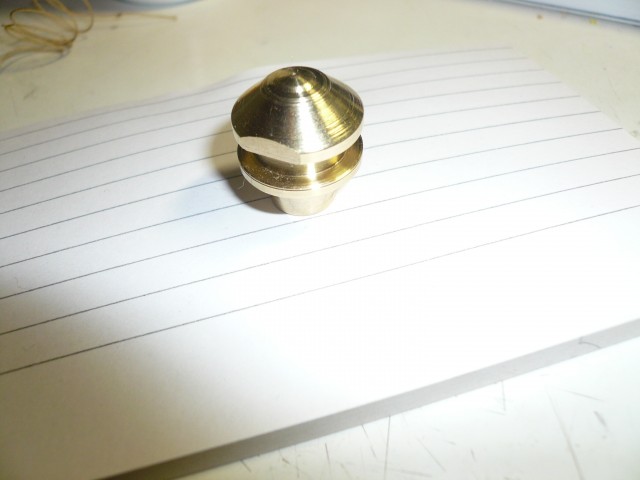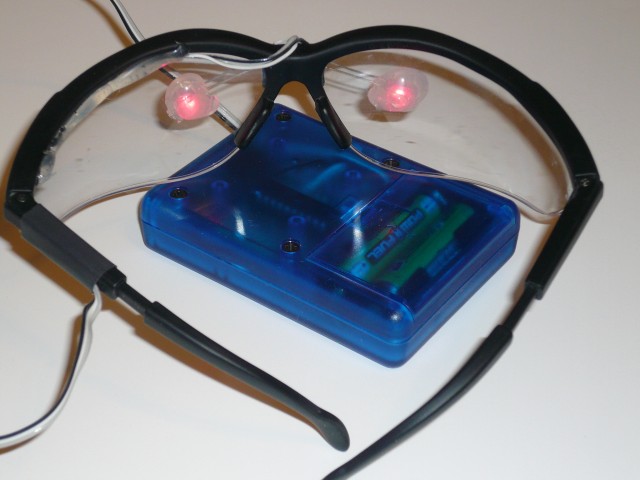After melting the PTFE insulator on my RepStrap extruder twice, I went back to the drawing board and replaced the whole hot-end assembly.
I manually turned the new nozzle and barrel on my mini-lathe. The nichrome heater wire will wrap right around the nozzle, applying the heat as close as possible to the tip.
The heater-barrel has a reduced outer diameter, my theory being that less metal there will reduce the flow of heat up into the PTFE insulator.
Here are a few pictures.

Extruder nozzle, with channel for nichrome.
Read the rest of this entry »
The RepRap is a 3D printer that builds small objects out of plastics, by squirting layers of melted plastic out of a nozzle, on to a computer-controlled moving platform. Once a single layer is made, it moves to the next layer up from the bottom, repeating this process until your object is created.
This process is called “Fused Deposition Modeling”, or “Fused Filament Fabrication”.
The end result is a strong plastic part, with a slightly ridged surface.
This is basically the same method used by the Stratasys FDM rapid prototyping machine, which costs around $30,000.
The Chicken & Egg problem of building a RepRap machine is that many of the parts are actually made using a RepRap, so if you don’t already have access to one, you’re at a disadvantage.
I’ve been working on what’s called a RepStrap, that is, it’s not exactly following the plans for a RepRap machine, but can be used to ‘bootstrap’ construction of a RepRap. The end result is the same in that you have a 3D printer, but the construction plans & materials differ.
When starting my build I had a few design goals: appearance, cost, and functionality.
Read the rest of this entry »
This is my own version of the “Brain Machine” as published in Make Magazine vol 10.
Basicially the combination of flashing lights in your eyes, and playing binaural beats into your ears is supposed to entrain your brainwaves to those of a relaxed state, leaving you feeling mellow and rested. I can’t really describe exactly what it’s like, but it’s not just snake-oil.
The project as described in make uses a repurposed mini-POV kit, with replacement firmware. I already had some
atmega-48 chips and a programmer, so I just built it on a small piece of perf-board.
The case is a small project case I had in my box ‘o parts, the frame is just a pair of safety glasses, the LED’s are held in place with hot-glue, which also diffuses the light.
I’m pleased with the end result, overall a fun evening project.




